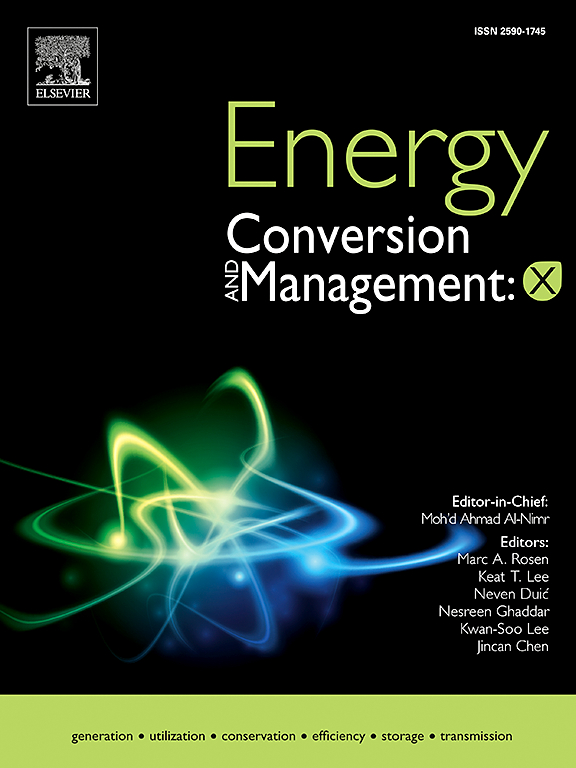WHR systems based on sCO2 gas turbines for marine applications: The effect of route environmental conditions on performance
IF 7.1
Q1 ENERGY & FUELS
引用次数: 0
Abstract
Waste Heat Recovery is one of the viable solutions to enhance the global efficiency of propulsion and energy systems in marine applications, thus mitigating and reducing the greenhouse gas emission from shipping. In this context, WHR systems based on supercritical CO2 Brayon Cycle are considered an emerging and interesting technology. The aim of this study is to investigate the off-design behaviour of an integrated energy system based on a commercial gas turbine (LM2500+) and a bottoming partially preheated and recuperated sCO2 gas turbine, considering the variations in environmental conditions, that a vessel may encounter along commercial routes. In particular, an energy, environmental and exergetic numerical analysis has been carried out considering two different routes connecting Europe (the departure port is Naples in Southern Italy) to Kuala Lumpur (Malaysia), passing or not through the Suez Canal. The same routes have been considered in two different seasons (March 2024 and August/September 2024), to underline the effect of air and seawater temperatures on the overall performance of the integrated system. The steady-state thermodynamic analysis has been carried out using the commercial software Thermoflex. The results of the analysis highlighted that the overall efficiency of the system can vary up to 11 % in the same location, in different seasons and can reach a value closed to 49 %, dropping to 42 % in the worst-case scenario. At the same time, the efficiency of WHR can change up to 40–47 % in the same location under different environmental conditions considered.
求助全文
约1分钟内获得全文
求助全文
来源期刊

Energy Conversion and Management-X
Multiple-
CiteScore
8.80
自引率
3.20%
发文量
180
审稿时长
58 days
期刊介绍:
Energy Conversion and Management: X is the open access extension of the reputable journal Energy Conversion and Management, serving as a platform for interdisciplinary research on a wide array of critical energy subjects. The journal is dedicated to publishing original contributions and in-depth technical review articles that present groundbreaking research on topics spanning energy generation, utilization, conversion, storage, transmission, conservation, management, and sustainability.
The scope of Energy Conversion and Management: X encompasses various forms of energy, including mechanical, thermal, nuclear, chemical, electromagnetic, magnetic, and electric energy. It addresses all known energy resources, highlighting both conventional sources like fossil fuels and nuclear power, as well as renewable resources such as solar, biomass, hydro, wind, geothermal, and ocean energy.
 求助内容:
求助内容: 应助结果提醒方式:
应助结果提醒方式:


